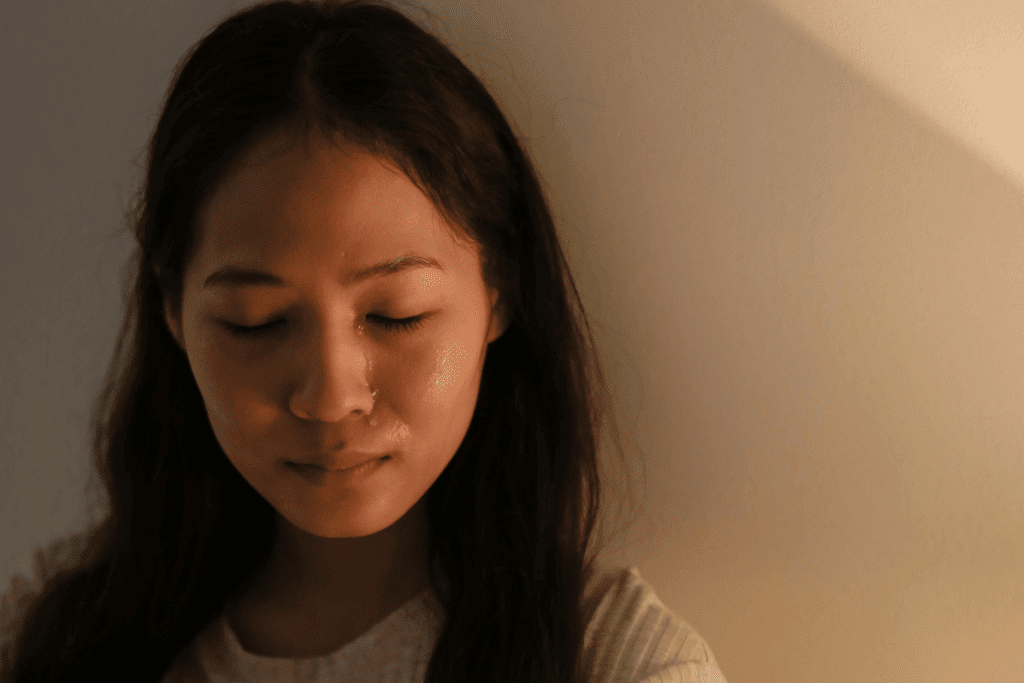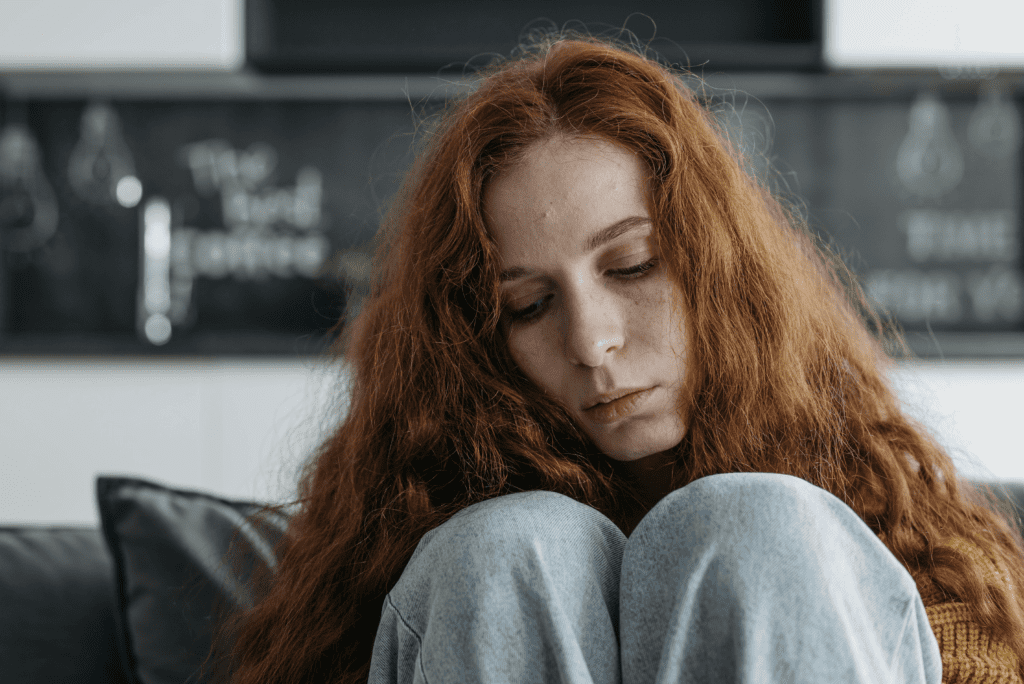Last updated on December 17th, 2024 at 01:02 pm
- 1. Understanding Social Anxiety Disorder
- 1.1 Key Diagnostic Criteria
- 1.2 Types of Social Anxiety Disorder
- 2. Symptoms of Social Anxiety Disorder
- 2.1 Physical Symptoms
- 2.2 Cognitive Symptoms
- 2.3 Behavioral Symptoms
- 3. Causes and Risk Factors
- 3.1 Biological Factors
- 3.2 Environmental Factors
- 3.3 Personality Traits
- 4. Diagnosis and Assessment
- 4.1 Clinical Interview
- 4.2 Psychological Questionnaires
- 4.3 Differential Diagnosis
- 5. Impact on Daily Life
- 5.1 Educational and Career Impact
- 5.2 Relationship Challenges
- 5.3 Physical Health Consequences
- 6. Treatment Approaches
- 6.1 Psychotherapy
- 6.2 Medication
- 6.3 Complementary Approaches
- 7. Living with Social Anxiety Disorder
- 7.1 Coping Strategies
- 7.2 Building Resilience
- 7.3 Seeking Ongoing Support
- The Complexity of Co-occurring Disorders with Social Anxiety Disorder
- Social Anxiety Disorder and Depression
- Social Anxiety Disorder and Personality Disorders
- Social Anxiety Disorder and Post-Traumatic Stress Disorder
- Social Anxiety Disorder and Alcohol Use
- Physical Symptoms in Social Anxiety Disorder
- Social Anxiety Disorder in Children and Adolescents
- Social Anxiety Disorder and Cognitive Behavioral Therapy
- Cultural Factors in Social Anxiety Disorder
- Social Anxiety Disorder and Physical Health
- Social Anxiety Disorder and School or Work Performance
- Social Anxiety Disorder and Obsessive-Compulsive Disorder
- Social Anxiety Disorder and Specific Phobias
- Social Anxiety Disorder and Anti-Anxiety Medications
- Psychological Factors and Social Anxiety Disorder
- Social Anxiety Disorder and Physical Reactions
- Social Anxiety Disorder and Neurodevelopmental Conditions
- Social Anxiety Disorder and Selective Mutism
- Social Anxiety Disorder and Panic Attacks
- Social Anxiety Disorder and Blushing and Sweating
- Social Anxiety Disorder and Lifestyle Changes
- Social Anxiety Disorder and Comorbid Substance Use Disorders
- Social Anxiety Disorder and Traumatic Brain Injury
- Social Anxiety Disorder and Dissociative Disorders
- Social Anxiety Disorder and Health Consequences
- Social Anxiety Disorder and Gender Dysphoria
- Social Anxiety Disorder and Sleep-Wake Disorders
- Social Anxiety Disorder and Other Specified Mental Disorders
- Social Anxiety Disorder and Reactive Attachment Disorder
- Social Anxiety Disorder and Cardiovascular Symptoms
- Social Anxiety Disorder and Adolescents’ Peer Interactions
- Social Anxiety Disorder and Internet Gaming Disorder
- Social Anxiety Disorder and Neurocognitive Disorders
- Social Anxiety Disorder and Specific Mental Disorders
- Social Anxiety Disorder and Agoraphobia
- Social Anxiety Disorder and Adjustment Disorders
- Social Anxiety Disorder and Borderline Personality Disorder
- Social Anxiety Disorder and Dependent Personality Disorder
- Social Anxiety Disorder and Histrionic Personality Disorder
- Social Anxiety Disorder and Seasonal Affective Disorder
- Social Anxiety Disorder and Bipolar Disorder
- Social Anxiety Disorder and Schizoid Personality Disorder
- Social Anxiety Disorder and Gambling Disorder
- Social Anxiety Disorder and Delirium
- Social Anxiety Disorder and Conversion Disorder
- Social Anxiety Disorder and Personality Changes Due to Medical Conditions
- Social Anxiety Disorder and Disinhibited Social Engagement Disorder
- Social Anxiety Disorder and Somatic Symptom Disorder
- Social Anxiety Disorder and Schizotypal Personality Disorder
- Social Anxiety Disorder and Paranoid Personality Disorder
- Social Anxiety Disorder and Antisocial Personality Disorder
- Social Anxiety Disorder and Illness Anxiety Disorder
- Social Anxiety Disorder and Factitious Disorder
- Social Anxiety Disorder and Restless Legs Syndrome
- Social Anxiety Disorder and Personality Change due to Another Medical Condition
- Social Anxiety Disorder and Psychosis
- Social Anxiety Disorder and Malingering
- Social Anxiety Disorder and Kleptomania
- Social Anxiety Disorder and Oppositional Defiant Disorder
- Social Anxiety Disorder and Long-Term Health Effects
- Frequently Asked Questions
- What Are the Most Effective Treatment Options for Social Anxiety Disorder?
- How Does Generalized Anxiety Disorder Differ From Social Anxiety Disorder?
- Can Social Anxiety Disorder Lead to Substance Use Disorders?
- How Is Social Anxiety Disorder Diagnosed in Children?
- How Can Cognitive Behavioral Therapy Help Manage Social Anxiety Symptoms?
- What Are Common Anxiety Symptoms in Social Anxiety Disorder?
- How Does Avoidant Personality Disorder Relate to Social Anxiety Disorder?
- Can Social Anxiety Disorder Lead to Suicidal Ideation?
- What Role Does the Brain Amygdala Play in Social Anxiety Disorder?
- How Does Major Depression Interact With Social Anxiety Disorder?
- Can Exposure Therapy Alleviate Fear of Social Situations?
- How Is Social Anxiety Disorder Linked to Avoidance of Public Restrooms?
- What Is the Relationship Between Social Anxiety Disorder and Selective Mutism?
- How Can Relaxation Techniques Help With Social Anxiety Disorder?
- How Does Social Anxiety Disorder Affect School Performance?
- Can Social Media Use Worsen Social Anxiety Disorder Symptoms?
- How Do Anti-Anxiety Medications Work for Social Anxiety Disorder?
- Can Mindfulness Practices Help Alleviate Social Anxiety Disorder Symptoms?
- What Is the Role of Family Relationships in Social Anxiety Disorder?
- How Does Avoidance Behavior Worsen Social Anxiety Disorder Symptoms?
- How Are Panic Disorder and Social Anxiety Disorder Related?
- Can Virtual Reality Therapy Be Effective for Social Anxiety Disorder?
Social anxiety disorder (SAD) is a complex mental health condition that goes far beyond typical shyness or introversion. This serious disorder can cause significant distress and impairment in multiple areas of a person’s life, sometimes even becoming life-threatening in severe cases.
To fully understand SAD, it’s crucial to examine its symptoms, causes, diagnosis, and impact.
1. Understanding Social Anxiety Disorder
Social anxiety disorder, also known as social phobia, is characterized by intense fear and anxiety in social situations. People with SAD experience persistent, irrational fears of being judged, criticized, or humiliated by others. These fears can be so overwhelming that they interfere with daily activities and relationships.
1.1 Key Diagnostic Criteria
For a formal SAD diagnosis, several criteria must be met:
• Persistent fear of social situations involving potential scrutiny
• Anxiety that is disproportionate to the actual threat posed
• Avoidance of feared situations or enduring them with intense distress
• Significant impairment in daily functioning
• Symptoms persisting for six months or longer
• Recognition that the fear is excessive or unreasonable
1.2 Types of Social Anxiety Disorder
SAD is typically categorized into two main types:
• Generalized SAD: This more severe form involves fear across a wide range of social situations.
• Performance-only SAD: This type is limited to specific performance situations, such as public speaking.
While both types can significantly impact a person’s life, generalized SAD tends to be more debilitating and is associated with higher rates of comorbid conditions.
2. Symptoms of Social Anxiety Disorder
The symptoms of SAD can manifest in various ways, affecting a person’s thoughts, emotions, and physical state.
2.1 Physical Symptoms
• Rapid heartbeat and breathing
• Sweating
• Trembling or shaking
• Nausea or stomach discomfort
• Dizziness or lightheadedness
• Muscle tension
2.2 Cognitive Symptoms
• Intense worry about upcoming social situations
• Fear of being judged negatively
• Difficulty concentrating
• Overanalyzing past social interactions
• Negative self-talk and self-criticism
2.3 Behavioral Symptoms
• Avoiding social situations
• Speaking quietly or mumbling
• Avoiding eye contact
• Difficulty initiating or maintaining conversations
• Refusing to engage in activities that might draw attention
These symptoms can create a vicious cycle, where the fear of experiencing them in social situations leads to increased anxiety and avoidance.


3. Causes and Risk Factors
The exact causes of SAD are not fully understood, but research suggests a combination of factors contribute to its development.
3.1 Biological Factors
• Genetics: Studies show that SAD tends to run in families, suggesting a genetic component.
• Brain chemistry: Imbalances in neurotransmitters, particularly serotonin, may play a role.
• Brain structure: Research indicates that people with SAD may have an overactive amygdala, the part of the brain responsible for fear responses.
3.2 Environmental Factors
• Childhood experiences: Negative social experiences, such as bullying or public humiliation, can contribute to SAD.
• Parenting styles: Overprotective or controlling parenting may increase the risk of developing SAD.
• Cultural influences: Some cultures place a higher value on social conformity, potentially increasing social anxiety.
3.3 Personality Traits
• Shyness: While not all shy people develop SAD, extreme shyness in childhood can be a risk factor.
• Perfectionism: Setting unrealistically high standards for oneself can contribute to social anxiety.
• Low self-esteem: A poor self-image can make social situations more daunting.
4. Diagnosis and Assessment
Diagnosing SAD involves a comprehensive evaluation by a mental health professional. This process typically includes:
4.1 Clinical Interview
A thorough discussion of symptoms, their duration, and their impact on daily life. The clinician will also explore the individual’s personal and family history.
4.2 Psychological Questionnaires
Standardized assessment tools, such as the Liebowitz Social Anxiety Scale or the Social Phobia Inventory, may be used to gauge symptom severity.
4.3 Differential Diagnosis
Other conditions, such as panic disorder or depression, need to be ruled out as they can present with similar symptoms.


5. Impact on Daily Life
SAD can have far-reaching consequences on various aspects of a person’s life.
5.1 Educational and Career Impact
• Difficulty participating in class or giving presentations
• Avoidance of job interviews or networking opportunities
• Reduced job performance due to anxiety in workplace social situations
5.2 Relationship Challenges
• Difficulty forming and maintaining friendships
• Reluctance to engage in romantic relationships
• Strain on existing relationships due to avoidance behaviors
5.3 Physical Health Consequences
• Increased risk of cardiovascular problems due to chronic stress
• Weakened immune system
• Higher likelihood of developing other mental health conditions
6. Treatment Approaches
Effective treatments for SAD are available and often involve a combination of approaches.
6.1 Psychotherapy
• Cognitive-Behavioral Therapy (CBT): This is considered the gold standard for SAD treatment. It helps individuals identify and challenge negative thought patterns and gradually face feared situations.
• Exposure Therapy: A form of CBT that involves gradually confronting feared social situations in a controlled manner.
• Acceptance and Commitment Therapy (ACT): This approach focuses on accepting anxiety while committing to valued actions.


6.2 Medication
• Selective Serotonin Reuptake Inhibitors (SSRIs): These antidepressants are often the first-line medication treatment for SAD.
• Beta-blockers: These can help manage physical symptoms of anxiety in performance situations.
• Benzodiazepines: While effective for short-term anxiety relief, these are typically used cautiously due to the risk of dependence.
6.3 Complementary Approaches
• Mindfulness and meditation: These practices can help reduce overall anxiety levels.
• Social skills training: This can boost confidence in social interactions.
• Lifestyle changes: Regular exercise, adequate sleep, and a balanced diet can support overall mental health.
7. Living with Social Anxiety Disorder
While SAD can be challenging, many individuals learn to manage their symptoms effectively and lead fulfilling lives.
7.1 Coping Strategies
• Practicing relaxation techniques
• Challenging negative thoughts
• Gradually facing feared situations
• Joining support groups
• Maintaining a healthy lifestyle
7.2 Building Resilience
• Developing a strong support network
• Setting realistic goals and celebrating small victories
• Cultivating self-compassion and self-acceptance
7.3 Seeking Ongoing Support
• Regular check-ins with mental health professionals
• Participating in ongoing therapy or support groups
• Staying informed about new treatment options


The Complexity of Co-occurring Disorders with Social Anxiety Disorder
Social anxiety disorder often overlaps with other mental health conditions, complicating diagnosis and treatment. Commonly, people with anxiety disorders, such as generalized anxiety disorder or panic disorder, may also exhibit social anxiety symptoms.
These co-occurring conditions require a nuanced approach to care. They tend to intensify each other and hinder effective treatment.
Social Anxiety Disorder and Depression
Major depression frequently coexists with social anxiety disorder. This contributes to severe anxieties and worsens the challenges faced in social interactions.
Clinical depression amplifies the challenges posed by social encounters. It makes daily living more difficult, requiring a thorough evaluation for effective treatment.
Identifying both conditions accurately is essential. This is key to selecting the most effective treatment options available.
Social Anxiety Disorder and Personality Disorders
Individuals with social anxiety disorder may also have avoidant personality disorder. This psychiatric disorder involves excessive fear of rejection.
Avoidant personality disorder significantly impacts relationships and social settings. The overlap with social anxiety often requires integrated behavioral therapy to manage social fears.
Integrated therapy aims to improve the quality of life for those suffering. Addressing social fears and providing emotional support are central aspects of treatment.
Social Anxiety Disorder and Post-Traumatic Stress Disorder
Posttraumatic stress disorder can also co-occur with social anxiety disorder. This is especially true when anxiety stems from a traumatic event.
Fear response mechanisms become overly sensitive. This heightened state often leads to increased social anxiety symptoms.
Cognitive behavior therapy is effective in managing symptoms. It helps mitigate the effects of both social anxiety and PTSD in individuals.


Social Anxiety Disorder and Alcohol Use
The use of alcohol as a coping mechanism is common among those with social anxiety disorder. This pattern can lead to alcohol use disorder, complicating treatment.
Relying on alcohol during social activities often escalates to substance abuse. Specialized intervention becomes necessary to break this cycle.
Intervention strategies focus on both substance abuse and anxiety symptoms. A comprehensive approach helps patients regain control over social and daily activities.
Physical Symptoms in Social Anxiety Disorder
The physical symptoms of social anxiety often resemble those seen in other common anxiety disorders. People with anxiety disorders frequently report shortness of breath and chest pain.
These symptoms can also include rapid heartbeat during anxiety attacks. Such symptoms are often mistaken for severe health issues, such as a heart attack.
A thorough physical exam is crucial for a proper diagnosis. Distinguishing between anxiety symptoms and other health conditions is vital.
Social Anxiety Disorder in Children and Adolescents
Social anxiety disorder in children presents unique challenges. Adolescent subjects often experience related issues like separation anxiety disorder.
Separation anxiety often precedes social anxiety, manifesting as ongoing fear. This fear can arise in peer settings or interactions with adults.
The fear of embarrassment is a critical factor during early development. Untreated, it can evolve into more severe anxieties, requiring specialized treatment approaches.
Social Anxiety Disorder and Cognitive Behavioral Therapy
Cognitive behavioral therapy for social anxiety is the gold standard for treatment. It aims to address negative evaluation and the fear of social settings.
Behavioral therapy replaces negative experiences with more constructive thoughts. It is effective in helping patients overcome persistent social anxiety symptoms.
The benefits of CBT are well-documented, making it an essential approach. It helps patients to face feared situations in a structured manner.


Cultural Factors in Social Anxiety Disorder
Cultural factors can heavily influence social anxiety disorder. In some societies, there is a high emphasis on conformity, increasing social anxiety.
The American Psychiatric Association highlights the importance of cultural awareness. Understanding cultural factors is crucial when diagnosing and treating social anxiety symptoms.
Cultural norms may dictate acceptable social behavior. This can significantly influence the development and persistence of social anxiety.
Social Anxiety Disorder and Physical Health
Chronic anxiety, including social anxiety, is linked to long-term health problems. Excessive anxiety often leads to irritable bowel syndrome and other gastrointestinal issues.
Extreme distress from social encounters can exacerbate cardiovascular conditions. This makes it vital for healthcare providers to consider the full range of symptoms.
Implementing effective treatment options is essential for improving overall health. Physical health and mental health are intricately connected in social anxiety.
Social Anxiety Disorder and School or Work Performance
Social anxiety disorder can have a significant impact on school performance. Avoidance behaviors, such as skipping classes, are common.
Workplace anxiety similarly leads to avoidance of meetings and interactions. These behaviors contribute to decreased quality of life and limited opportunities.
This often leads to missed opportunities for growth, both academically and professionally. Addressing anxiety can unlock these missed potential avenues.


Social Anxiety Disorder and Obsessive-Compulsive Disorder
Obsessive-compulsive disorder often co-occurs with social anxiety disorder. Persistent, intrusive thoughts complicate social anxiety treatment.
Excessive worry is common among individuals with both conditions. Treatment usually requires a combination of medication and behavioral therapy.
Combining treatment methods is crucial for effective outcomes. Addressing each condition individually does not yield the same success as an integrated approach.
Social Anxiety Disorder and Specific Phobias
Social anxiety disorder frequently overlaps with specific phobias. This can include fears such as the use of public restrooms or embarrassment in social events.
Exposure therapy is often employed to tackle specific phobias. Gradual exposure helps to reduce the intensity of these fears over time.
Reducing specific fears contributes to better overall anxiety management. A targeted approach helps in dealing with overlapping conditions.
Social Anxiety Disorder and Anti-Anxiety Medications
Anti-anxiety medications, such as SSRIs, are commonly prescribed for social anxiety disorder. Effectiveness varies based on individual circumstances.
Co-occurring conditions like generalized anxiety disorder or substance use disorders may influence treatment response. Monitoring by a mental health specialist ensures a more targeted approach.
The use of medications must be carefully managed. Long-term use can carry risks, making professional supervision crucial.
Psychological Factors and Social Anxiety Disorder
Psychological factors often contribute to social anxiety disorder. Constant worry and negative self-perception are significant contributors.
These psychological symptoms can make anxiety worse over time. During social activities, these thoughts further hinder an individual’s ability to engage effectively.
Addressing these concerns through cognitive therapy is crucial. Such approaches significantly improve emotional responses and social interactions.


Social Anxiety Disorder and Physical Reactions
Physical reactions such as dry mouth are common in social anxiety. Trembling and muscle tension often accompany such episodes.
These symptoms represent the body’s fight-or-flight response. Techniques such as breathing exercises help to manage these intense reactions.
Providing relief from these physical manifestations is important. Effective management strategies enhance an individual’s ability to face social encounters.
Social Anxiety Disorder and Neurodevelopmental Conditions
Conditions like attention deficit hyperactivity disorder complicate social anxiety disorder. Autism spectrum disorder similarly adds to the challenges faced.
Children and adults with neurodevelopmental disorders often experience heightened anxiety. Specialized interventions tailored to their needs are critical.
A personalized approach is required for effective treatment. Understanding their unique challenges is key to successful intervention.
Social Anxiety Disorder and Selective Mutism
Selective mutism can overlap with social anxiety disorder. It typically presents in children who are unable to speak in specific social settings.
This psychiatric disorder is often linked to severe anxieties and fear of negative evaluation. Treatment often includes cognitive behavioral techniques to reduce fears.
Exposure therapy is also employed to encourage speech in feared situations. Gradual exposure helps children become comfortable in social settings.
Social Anxiety Disorder and Panic Attacks
Panic attacks are frequently observed in people with social anxiety disorder. These intense episodes of fear are triggered by social events or unfamiliar people.
Behavioral therapy plays a significant role in managing panic attacks. Recognizing and treating these attacks can improve an individual’s overall quality of life.
Management techniques focus on identifying panic triggers. Addressing these helps reduce the frequency and severity of panic episodes.


Social Anxiety Disorder and Blushing and Sweating
Social anxiety disorder often involves blushing control issues. Blushing is a common physical manifestation of anxiety.
Sweating is also prevalent in social situations, worsening discomfort. Cognitive behavior therapy can help reduce these reactions.
Addressing blushing and sweating enhances comfort in social encounters. Therapy focuses on the cognitive aspects that lead to these physical symptoms.
Social Anxiety Disorder and Lifestyle Changes
Lifestyle changes can be highly effective for reducing social anxiety symptoms. Exercise and a balanced diet can have a significant impact.
Diet and nutrition improvements contribute to mental well-being. Consistent physical activity is recommended to support anxiety reduction.
Incorporating these changes into daily life helps improve outcomes. These complementary approaches work well alongside standard treatments.
Social Anxiety Disorder and Comorbid Substance Use Disorders
Substance use disorders often co-occur with social anxiety disorder. The misuse of drugs as a coping mechanism complicates treatment.
A drug of abuse may temporarily alleviate social anxiety symptoms. However, dependency creates a significant barrier to effective treatment.
Addressing both substance use and anxiety symptoms is critical. A comprehensive treatment plan targeting both conditions improves success rates.
Social Anxiety Disorder and Traumatic Brain Injury
Social anxiety disorder can develop following a traumatic brain injury. Such injuries may lead to changes in social skills and emotional regulation.
These changes often exacerbate anxiety symptoms. A combination of medical and psychological interventions is generally required.
Medical treatment focuses on brain injury recovery, while psychological treatment addresses anxiety. Combining these interventions offers better outcomes.
Social Anxiety Disorder and Dissociative Disorders
Dissociative disorders can co-occur with social anxiety disorder. Disconnection from reality often heightens social fears.
Cognitive behavioral therapy aims to improve emotional connections. This minimizes social avoidance behaviors and improves the individual’s quality of life.
Targeting the dissociative aspects is crucial for better results. Proper treatment helps individuals re-engage with their environment.
Social Anxiety Disorder and Health Consequences
Chronic stress associated with social anxiety can weaken the immune system. This increases susceptibility to illnesses over time.
Regular support from healthcare providers is essential. Early intervention helps prevent long-term physical health complications.
Long-term anxiety may lead to cardiovascular issues. Proper management reduces these risks and supports overall health.
Social Anxiety Disorder and Gender Dysphoria
Social anxiety disorder can present alongside gender dysphoria. The distress experienced from social judgment can be significant.
Addressing overlapping conditions requires sensitivity from healthcare providers. Specialized support helps improve both gender-related and social anxiety symptoms.
Focusing on both aspects is essential for effective treatment. Personalized therapy ensures a higher success rate in managing both conditions.
Social Anxiety Disorder and Sleep-Wake Disorders
Sleep-wake disorders are common in those with social anxiety disorder. Insomnia or substance-induced sleep disorders may coexist with anxiety.
These sleep issues often exacerbate anxiety symptoms. Proper sleep management is vital for improving mental health.
Addressing sleep problems often requires behavioral approaches. Consistent sleep hygiene practices can alleviate anxiety symptoms.


Social Anxiety Disorder and Other Specified Mental Disorders
Social anxiety disorder often coexists with other specified mental disorders. This includes adjustment disorders or neurocognitive disorders.
Integrated treatment approaches help manage multiple conditions. Medical and psychological support ensures a comprehensive treatment plan.
Addressing co-occurring disorders helps in long-term management. Effective intervention leads to improved social functioning and reduced anxiety.
Social Anxiety Disorder and Reactive Attachment Disorder
Reactive attachment disorder may present with social anxiety in children. It affects their ability to form healthy attachments.
This combination often requires specialized interventions. Building healthier peer settings is essential to improve interactions.
Improving attachment skills directly influences anxiety outcomes. Effective therapy promotes better social relationships.
Social Anxiety Disorder and Cardiovascular Symptoms
Social anxiety disorder often leads to cardiovascular symptoms. Increased heart rate and chest pain are typical physical reactions.
These symptoms may be mistaken for other serious health problems. Proper differential diagnosis is important for effective management.
Treatment focuses on reducing physical manifestations. Anxiety management techniques help alleviate cardiovascular symptoms.
Social Anxiety Disorder and Adolescents’ Peer Interactions
Social anxiety disorder can impair peer interactions in adolescent subjects. These individuals often struggle with maintaining friendships.
Social skills development is crucial for overcoming anxiety. Support groups and cognitive behavioral therapy help foster confidence.
Improving peer interactions reduces overall anxiety levels. Building social skills is an integral part of the treatment.
Social Anxiety Disorder and Internet Gaming Disorder
Social anxiety disorder and internet gaming disorder often co-occur. Individuals may use online gaming to avoid social interactions.
Reliance on gaming as a coping mechanism creates a dependency. Treatment must address both gaming addiction and anxiety symptoms.
Behavioral therapy helps reduce the need for online escapism. Addressing both conditions improves social functioning.
Social Anxiety Disorder and Neurocognitive Disorders
Social anxiety disorder can coexist with neurocognitive disorders. Major neurocognitive disorder can complicate social anxiety management.
This combination affects daily living and independence. Specialized care helps improve anxiety symptoms and overall quality of life.
Treatment involves both cognitive and behavioral approaches. Supporting independence is a key aspect of comprehensive treatment.
Social Anxiety Disorder and Specific Mental Disorders
Social anxiety disorder may overlap with other mental disorders. Conditions such as acute stress disorder or bipolar disorder are common.
Addressing these co-occurring conditions requires an integrated approach. Behavioral therapy and medication work well in combination.
Comprehensive treatment offers better outcomes. Treating multiple conditions at once improves social anxiety management.


Social Anxiety Disorder and Agoraphobia
Agoraphobia can co-occur with social anxiety disorder. Individuals may experience extreme distress about leaving their home.
Treatment often includes exposure therapy for gradual desensitization. Relaxation techniques help improve tolerance for open spaces.
Addressing both conditions enhances overall quality of life. A structured treatment approach is essential for improvement.
Social Anxiety Disorder and Adjustment Disorders
Adjustment disorders may develop alongside social anxiety disorder. This often occurs following a stressful event.
Treatment involves helping individuals adapt to changes. Managing social anxiety symptoms is a core aspect of the intervention.
Combining adjustment and anxiety treatment yields better results. Therapy helps patients regain balance in their life.
Social Anxiety Disorder and Borderline Personality Disorder
Borderline personality disorder often co-occurs with social anxiety disorder. This leads to unstable relationships and social rejection fears.
Integrated treatment addresses both emotional instability and social fears. Combined interventions yield better outcomes.
Management aims to stabilize mood while reducing social anxiety. Improved emotional regulation is the goal of therapy.
Social Anxiety Disorder and Dependent Personality Disorder
Individuals with dependent personality disorder may struggle with social anxiety. They often excessively rely on others for support.
Cognitive behavior therapy can reduce dependency. It helps individuals build self-esteem and gain independence.
Addressing both dependency and anxiety improves outcomes. Therapy focuses on building confidence and reducing social fears.
Social Anxiety Disorder and Histrionic Personality Disorder
Histrionic personality disorder can overlap with social anxiety. Attention-seeking behaviors often mask underlying fears of judgment.
Effective treatment targets both attention-seeking and social fears. Improving social confidence is a core aspect of therapy.
Reducing the fear of negative evaluation enhances social interactions. Therapy helps balance interpersonal relationships.


Social Anxiety Disorder and Seasonal Affective Disorder
Seasonal affective disorder can exacerbate social anxiety. Symptoms are typically worse during darker months.
Light therapy is commonly used for seasonal affective disorder. Cognitive behavioral approaches address both conditions effectively.
Combining light therapy and CBT has positive effects. It helps reduce anxiety symptoms and improve mood during winter months.
Social Anxiety Disorder and Bipolar Disorder
Social anxiety disorder may also co-occur with bipolar disorder. Mood swings contribute to fluctuating levels of anxiety.
Treating both conditions involves a combination of medications and therapy. Mood stabilization is key to reducing anxiety.
A targeted treatment approach ensures better management. Consistent treatment helps manage both mood and anxiety symptoms.
Social Anxiety Disorder and Schizoid Personality Disorder
Schizoid personality disorder can overlap with social anxiety. This results in social withdrawal and limited emotional responses.
Therapeutic interventions focus on increasing social skills. Reducing the fear of social settings improves quality of life.
Addressing both social withdrawal and anxiety helps in re-engaging socially. Improving emotional expression is central to treatment.
Social Anxiety Disorder and Gambling Disorder
Individuals with social anxiety disorder may develop gambling disorder. Gambling often serves as a way to cope with avoidance behaviors.
The thrill of gambling offers a temporary distraction. Treatment must target both gambling urges and social anxiety symptoms.
Reducing avoidance behaviors is critical for improving outcomes. Therapy helps individuals find healthier coping mechanisms.
Social Anxiety Disorder and Delirium
Delirium can occasionally co-occur with social anxiety disorder. Older adults are particularly susceptible to this overlap.
Confusion and altered consciousness seen in delirium intensify anxiety symptoms. An integrated medical and psychological approach is necessary.
Stabilizing delirium reduces anxiety symptoms. Medical interventions combined with therapy offer the best results.


Social Anxiety Disorder and Conversion Disorder
Conversion disorder may present alongside social anxiety. Psychological distress often manifests as physical symptoms like paralysis.
Addressing conversion disorder requires focusing on psychological factors. Treating underlying distress is crucial for symptom improvement.
Combining therapy helps improve overall health. Addressing both physical symptoms and anxiety reduces overall distress.
Social Anxiety Disorder and Personality Changes Due to Medical Conditions
Personality changes due to medical conditions can complicate social anxiety. Traumatic brain injuries are a common cause.
Such injuries alter an individual’s behavior, increasing anxiety. Treatment involves medical and psychological interventions to address both.
Combining these interventions supports overall well-being. A targeted approach helps manage social anxiety linked to medical changes.
Social Anxiety Disorder and Disinhibited Social Engagement Disorder
Disinhibited social engagement disorder may co-occur with social anxiety disorder. Children with early neglect are especially affected.
Disinhibited openness with strangers contrasts with anxiety in familiar settings. Specialized interventions are needed to balance behavior.
Effective treatment focuses on improving social behavior. Building healthier interactions is the goal of therapy.
Social Anxiety Disorder and Somatic Symptom Disorder
Somatic symptom disorder often coexists with social anxiety disorder. Physical symptoms like pain are linked to social fears.
Behavioral therapy addresses the focus on physical symptoms. Improving social functioning is a central goal.
Managing physical manifestations reduces social anxiety. Therapy also aims to shift the individual’s focus to positive social experiences.


Social Anxiety Disorder and Schizotypal Personality Disorder
Schizotypal personality disorder can occur with social anxiety disorder. Odd behavior often coincides with intense social anxiety.
Individuals struggle to maintain relationships and interpret social cues. Therapy aims to improve social skills and reduce anxiety.
Addressing both conditions is necessary for social improvement. Better social skills and reduced anxiety enhance interpersonal interactions.
Social Anxiety Disorder and Paranoid Personality Disorder
Paranoid personality disorder may present with social anxiety disorder. This combination involves distrust and fear of judgment.
Excessive fear and distrust make social settings challenging. Careful therapeutic intervention is required for improvement.
Building trust is key to successful treatment. Therapy focuses on reducing fear and enhancing social engagement.
Social Anxiety Disorder and Antisocial Personality Disorder
Social anxiety disorder can overlap with antisocial personality disorder. A disregard for others coincides with intense social fear.
Treatment targets both social anxiety and negative behaviors. Improving interpersonal relationships is the primary aim.
Behavior modification helps reduce antisocial tendencies. Addressing anxiety enhances social engagement and reduces isolation.
Social Anxiety Disorder and Illness Anxiety Disorder
Illness anxiety disorder is often seen with social anxiety disorder. The ongoing fear of having a serious medical condition is common.
Individuals may avoid social settings out of health concerns. Cognitive therapy helps mitigate both health and social fears.
Reducing the focus on illness is essential. Therapy helps individuals engage more fully in social settings.
Social Anxiety Disorder and Factitious Disorder
Factitious disorder may present alongside social anxiety disorder. Individuals fabricate symptoms for attention, complicating treatment.
Thorough evaluation is needed to understand motivations. Addressing social fears reduces the need for symptom exaggeration.
Effective treatment focuses on reducing social anxiety. Therapy aims to build genuine social connections.
Social Anxiety Disorder and Restless Legs Syndrome
Restless legs syndrome often complicates social anxiety disorder. The urge to move legs during social events heightens discomfort.
Managing restless legs includes both physical and psychological approaches. Addressing anxiety also helps reduce these physical symptoms.
Relieving physical symptoms enhances social comfort. A combination of interventions is necessary for effective management.


Social Anxiety Disorder and Personality Change due to Another Medical Condition
Personality changes from medical conditions can exacerbate social anxiety. Individuals often struggle to adapt to these changes.
Medical intervention and social anxiety disorder treatment options are crucial. Maintaining quality of life involves managing both medical and social issues.
A comprehensive approach supports the individual fully. Proper care ensures balanced mental and physical well-being.
Social Anxiety Disorder and Psychosis
Social anxiety disorder can co-occur with episodes of psychosis. These episodes involve losing touch with reality, intensifying social fears.
The fear of social interactions is magnified by psychotic symptoms. Combining antipsychotic medications with therapy is essential.
Stabilizing psychosis helps reduce anxiety. Consistent treatment leads to improved social functioning.
Social Anxiety Disorder and Malingering
Malingering may sometimes be seen in social anxiety disorder. Exaggeration of symptoms for external gain complicates treatment.
Understanding the root causes is crucial for effective treatment. Addressing social fears reduces the need for symptom exaggeration.
Focusing on genuine social interactions helps in recovery. Therapy builds confidence and reduces the desire to manipulate situations.
Social Anxiety Disorder and Kleptomania
Kleptomania can co-occur with social anxiety disorder. Theft is sometimes used as a coping mechanism for anxiety.
Treatment focuses on addressing both kleptomania and social fears. A dual-focused approach ensures better outcomes.
Reducing impulsive behavior helps manage anxiety. Therapy promotes healthier coping mechanisms for stress.
Social Anxiety Disorder and Oppositional Defiant Disorder
Oppositional defiant disorder often appears in children with social anxiety disorder. The presence of authority figures can trigger defiance.
Combining therapeutic approaches is crucial for improvement. Addressing both defiance and anxiety helps improve behavior.
Effective treatment involves behavioral therapy. Building healthier social responses is the primary aim.
Social Anxiety Disorder and Long-Term Health Effects
Chronic untreated social anxiety disorder can lead to long-term health issues. Cardiovascular and metabolic disorders are common outcomes.
Early intervention from a health care provider reduces these risks. Consistent support helps maintain overall well-being.
Reducing stress also minimizes health complications. Therapy combined with healthy habits ensures better outcomes.
From Embrace Inner Chaos to your inbox
Transform your Chaos into authentic personal growth – sign up for our free weekly newsletter! Stay informed on the latest research advancements covering:
Narcissistic Personality Disorder (NPD)
Frequently Asked Questions
What Are the Most Effective Treatment Options for Social Anxiety Disorder?
Effective treatment options for social anxiety disorder often include cognitive behavioral therapy (CBT) and anti-anxiety medications. Cognitive behavioral therapy helps individuals identify and change negative thought patterns that trigger social anxiety symptoms.
CBT focuses on gradually exposing people to their fears to reduce the severity of their anxiety response. Medications such as selective serotonin reuptake inhibitors (SSRIs) may also be prescribed to help manage symptoms.
Another effective approach is exposure therapy, a component of CBT, which involves gradual and systematic exposure to anxiety-inducing situations. According to the American Psychiatric Association, a combination of therapy and medication tends to offer the best outcomes for individuals with severe anxieties.
Practicing relaxation techniques and mindfulness exercises can also complement medical treatments. These practices help reduce physical symptoms like trembling and increased heart rate.
How Does Generalized Anxiety Disorder Differ From Social Anxiety Disorder?
Generalized anxiety disorder (GAD) differs from social anxiety disorder (SAD) mainly in its focus and symptoms. GAD involves ongoing fear and constant worry about a range of life situations.
SAD is more specifically linked to social interactions and the fear of negative evaluation. People with GAD experience excessive anxiety across multiple areas of daily life, such as work or health, even in the absence of immediate threats.
In contrast, social anxiety disorder primarily involves a fear of embarrassment in social settings. This fear is particularly common in scenarios involving public speaking or interactions with unfamiliar people.
GAD can often co-occur with SAD, leading to complex symptoms that require comprehensive treatment. Both disorders can significantly impair quality of life if left untreated, but treatment approaches like therapy and medication can be effective.
Can Social Anxiety Disorder Lead to Substance Use Disorders?
Social anxiety disorder can often lead to substance use disorders as individuals may use substances like alcohol to cope with severe anxieties. Alcohol or drug use may temporarily reduce symptoms of anxiety, making social interactions seem more manageable.
Over time, however, the use of these substances can escalate into a pattern of dependency. This can worsen the overall mental health condition and lead to additional complications.
A study by the National Institute of Mental Health suggests that people with social anxiety are at higher risk of developing alcohol use disorder. Dependence on other substances is also common as a form of self-medication.
Using drugs or alcohol generally leads to an increase in anxiety symptoms and can hinder treatment response. Addressing both social anxiety and substance abuse through integrated therapy is often crucial for effective long-term recovery.
How Is Social Anxiety Disorder Diagnosed in Children?
Social anxiety disorder in children is often diagnosed based on behavior patterns observed in peer settings and interactions with adults. A healthcare provider will evaluate a child for excessive fear or avoidance of social situations.
This evaluation often includes looking at the child’s medical history and any evidence of ongoing fear across different environments. Behavioral symptoms such as reluctance to speak, avoidance of group activities, and extreme distress during school performances are key indicators.
In some cases, selective mutism can also be observed. This involves the child being unable to speak in specific social situations despite being able to communicate in other settings.
Diagnosis may require a thorough examination, including a physical exam to rule out other medical conditions. A psychological assessment is also typically conducted.
Early diagnosis and intervention through cognitive behavioral therapy can significantly improve the child’s social functioning. Timely treatment can enhance the child’s overall quality of life.
How Can Cognitive Behavioral Therapy Help Manage Social Anxiety Symptoms?
Cognitive Behavioral Therapy (CBT) is one of the most effective treatment options for managing social anxiety disorder symptoms. CBT aims to challenge and change negative thought patterns that contribute to feelings of intense anxiety.
Techniques often include cognitive restructuring and exposure exercises. These enable individuals to confront and overcome specific fears.
Through systematic desensitization, individuals learn to tolerate social encounters that initially seemed overwhelming. According to the UK’s National Health Service, CBT is particularly effective in reducing social anxiety symptoms and enhancing self-esteem.
Regular sessions with a mental health specialist can help gradually minimize social fears. This promotes positive associations with social interactions and improves overall emotional responses.
What Are Common Anxiety Symptoms in Social Anxiety Disorder?
Common anxiety symptoms in social anxiety disorder include intense fear of being judged, excessive sweating, trembling, and a rapid heart rate. These physical symptoms are accompanied by psychological symptoms such as a fear of public embarrassment.
An extreme fear of social activities and avoiding eye contact are also common. The fear response is often triggered during social encounters, causing distress that may lead to avoiding such situations altogether.
Physical symptoms can also include shortness of breath and dry mouth. These are part of the body’s fight-or-flight response.
The Anxiety and Depression Association of America points out that these symptoms often lead individuals to withdraw from social settings. This reduces opportunities for positive experiences and worsens social avoidance behaviors.
Early intervention with cognitive-behavioral therapy or medications can be effective in managing these symptoms. Early treatment can help prevent the escalation of anxiety symptoms.
How Does Avoidant Personality Disorder Relate to Social Anxiety Disorder?
Avoidant personality disorder (APD) and social anxiety disorder (SAD) share similarities in that both involve severe social fears and avoidance behaviors. However, APD is more pervasive, affecting many aspects of an individual’s life and relationships.
In contrast, SAD is often more situation-specific. It typically relates to public speaking or social interactions that involve unfamiliar people.
While APD includes symptoms of social anxiety, it also involves feelings of inadequacy and an overwhelming fear of rejection. People with APD may go to extreme lengths to avoid social situations altogether.
Those with SAD may only avoid particular social contexts. The Cleveland Clinic notes that these two conditions often co-occur, making the diagnosis complex.
Both APD and SAD benefit from forms of treatment like cognitive behavioral therapy. CBT aims at improving social functioning and reducing avoidance behaviors.
Can Social Anxiety Disorder Lead to Suicidal Ideation?
Social anxiety disorder can, in some severe cases, lead to suicidal ideation due to the overwhelming nature of the symptoms. Individuals may feel trapped in a cycle of intense anxiety and isolation, resulting in feelings of hopelessness.
The fear of public embarrassment, combined with the lack of supportive social networks, may contribute to suicidal thoughts. This feeling of entrapment can exacerbate anxiety and lead to more severe mental health challenges.
According to the National Institute of Mental Health, people with untreated social anxiety disorder are at a higher risk for depression. This can further escalate the risk of suicidal ideation.
Effective treatment, including a combination of medication and psychotherapy, can significantly reduce the risk. Seeking help from a healthcare provider early on is crucial in managing symptoms and preventing suicidal ideation.
What Role Does the Brain Amygdala Play in Social Anxiety Disorder?
The amygdala in the brain plays a crucial role in social anxiety disorder by regulating emotional responses such as fear and anxiety. Individuals with social anxiety disorder often have heightened activity in the amygdala.
This heightened activity contributes to an exaggerated fear response during social encounters. The amygdala acts as a center for processing negative emotions, and its hyperactivity can explain the constant worry experienced by people with SAD.
Studies by Johns Hopkins Medicine have shown that this increased amygdala activity is linked to symptoms such as rapid heart rate and shortness of breath. These symptoms reflect the physiological aspects of social anxiety.
Medications aimed at regulating neurotransmitter levels, along with cognitive therapy, are often used to reduce this heightened fear response. This helps individuals manage their social anxiety more effectively.
How Does Major Depression Interact With Social Anxiety Disorder?
Major depression often interacts with social anxiety disorder, leading to a complex interplay of symptoms. People with both conditions may find it challenging to participate in social activities, which can further isolate them.
This isolation can worsen depressive symptoms. Social anxiety often prevents individuals from seeking support, contributing to prolonged periods of sadness and hopelessness.
According to Mayo Clinic, major depression can exacerbate social anxiety symptoms, and vice versa. This results in a vicious cycle that impairs daily functioning.
Treatment for both disorders often involves a combination of antidepressants and cognitive behavioral therapy. Effective management of both disorders is essential for improving quality of life and encouraging participation in social events.
Can Exposure Therapy Alleviate Fear of Social Situations?
Exposure therapy is effective in alleviating the fear of social situations in individuals with social anxiety disorder. By systematically exposing individuals to feared social settings, the therapy helps to desensitize them to anxiety triggers.
The goal is to reduce avoidance behaviors by encouraging repeated exposure. This eventually lowers the individual’s level of anxiety.
According to Verywell Mind, exposure therapy is most effective when combined with cognitive-behavioral techniques. It can be particularly helpful for overcoming fear responses in specific social situations.
Gradual exposure allows individuals to reframe their negative evaluations of social encounters. This ultimately reduces anxiety symptoms over time.
How Is Social Anxiety Disorder Linked to Avoidance of Public Restrooms?
Avoidance of public restrooms is a common behavior seen in people with social anxiety disorder. The fear of using public restrooms stems from concerns about being negatively evaluated or judged.
This is often linked to a fear of performing a bodily function in public. Such avoidance is a manifestation of the broader fear associated with social scrutiny.
Anxiety.org suggests that this behavior is an example of the extreme lengths people go to avoid social judgment. Avoidance can even involve essential activities, leading to impaired daily functioning.
Persistent avoidance can decrease quality of life. Cognitive-behavioral therapy and exposure techniques are recommended to help overcome such specific social fears.
What Is the Relationship Between Social Anxiety Disorder and Selective Mutism?
Selective mutism is a condition often associated with social anxiety disorder, particularly in children. It involves an inability to speak in certain social situations despite being able to speak comfortably in other settings, like at home.
This condition is considered an extreme manifestation of social anxiety. It reflects a severe fear response in social environments.
The Child Mind Institute explains that selective mutism can significantly impact social development and school performance. Children with this condition often require a tailored treatment approach.
Behavioral therapy focusing on gradually encouraging speech in feared settings is commonly used. Addressing selective mutism early with professional help can improve the child’s social functioning.
How Can Relaxation Techniques Help With Social Anxiety Disorder?
Relaxation techniques such as breathing exercises and progressive muscle relaxation can help manage symptoms of social anxiety disorder. These methods aim to reduce the physiological responses associated with anxiety.
Techniques like deep breathing exercises can help control the fight-or-flight response. This response often occurs during social encounters, leading to increased heart rate and muscle tension.
The Anxiety and Depression Association of America suggests that practicing relaxation techniques regularly can make social interactions less intimidating. By focusing on physical sensations and learning to relax muscles, individuals can experience an overall reduction in anxiety symptoms.
These techniques are often used in conjunction with other forms of therapy, such as cognitive-behavioral therapy. This helps enhance overall treatment outcomes.
How Does Social Anxiety Disorder Affect School Performance?
Social anxiety disorder can significantly affect school performance, particularly for children and adolescents. The National Institute on Mental Health notes that the fear of negative evaluation and intense anxiety in peer settings can lead to avoidance of group activities.
This avoidance may also lead to skipping school entirely. The ongoing fear of being judged can hinder participation in classroom discussions, resulting in poor academic outcomes.
Children with social anxiety disorder may also have difficulty making friends. This further isolates them and negatively impacts their social skills.
Avoidance of social settings can lead to increased feelings of loneliness. Decreased motivation to engage in schoolwork is also a common consequence.
Interventions like exposure therapy and cognitive-behavioral techniques are often used to help young individuals manage anxiety symptoms. These approaches can improve their school performance and overall well-being.
Can Social Media Use Worsen Social Anxiety Disorder Symptoms?
Social media use has been shown to worsen symptoms of social anxiety disorder in some individuals. Constant exposure to curated images and posts can lead to negative comparisons and increased feelings of inadequacy.
The fear of being judged on social media platforms can mimic the fears experienced during face-to-face interactions. This often leads to increased anxiety.
The American Psychiatric Association points out that individuals with social anxiety disorder may feel pressured to maintain an ideal online persona. This can be exhausting and further increase anxiety levels.
Reducing time spent on social media and focusing on real-life interactions can be beneficial in managing symptoms. Cognitive-behavioral therapy can also help individuals reframe their thoughts about social media and its impact on their self-worth.
How Do Anti-Anxiety Medications Work for Social Anxiety Disorder?
Anti-anxiety medications, such as selective serotonin reuptake inhibitors (SSRIs), are commonly used to manage social anxiety disorder. SSRIs help regulate serotonin levels in the brain, which is believed to play a role in mood and anxiety.
By increasing serotonin availability, these medications help reduce symptoms like excessive worry. They also help in controlling physiological responses, including increased heart rate and sweating.
According to WebMD, medications can help make social encounters less intimidating. This helps improve quality of life for individuals with social anxiety disorder.
However, they are most effective when combined with therapy, such as cognitive-behavioral therapy. Long-term use of medications may be necessary for some individuals, particularly those with severe social anxiety symptoms.
Can Mindfulness Practices Help Alleviate Social Anxiety Disorder Symptoms?
Mindfulness practices have been shown to help alleviate symptoms of social anxiety disorder by focusing attention on the present moment without judgment. Mindfulness helps individuals observe their anxious thoughts without becoming overwhelmed.
This reduces the impact of anxious thoughts and helps to manage their emotional response. Mindfulness allows individuals to recognize anxiety as a temporary state that does not need to control their actions.
According to Mayo Clinic, mindfulness practices, such as meditation and mindful breathing, can decrease overall anxiety levels. These practices reduce the fear of negative evaluation during social encounters.
Mindfulness techniques are particularly useful in managing ongoing fear associated with social anxiety. When used along with cognitive-behavioral therapy, mindfulness practices can further enhance treatment outcomes.
What Is the Role of Family Relationships in Social Anxiety Disorder?
Family relationships can play a significant role in the development and management of social anxiety disorder. Early interactions with parents and family members can either mitigate or exacerbate symptoms of social anxiety.
Overprotective or highly critical parenting styles have been linked to an increased risk of developing social fears in children. This can lead to the onset of social anxiety.
The Anxiety and Depression Association of America notes that supportive family environments are crucial for improving outcomes. Encouraging participation in social activities and providing reassurance can help mitigate anxiety symptoms.
Family therapy is often recommended as a complement to individual treatment. This allows family members to learn how to support their loved ones effectively.
How Does Avoidance Behavior Worsen Social Anxiety Disorder Symptoms?
Avoidance behavior is a common symptom of social anxiety disorder, but it often worsens the condition over time. When individuals avoid anxiety-inducing social situations, they reinforce the belief that these situations are dangerous.
This reinforcement can lead to an increase in anxiety symptoms. Avoidance limits opportunities for positive social experiences, contributing to a cycle of increased fear and isolation.
WebMD suggests that breaking this cycle requires gradually facing feared social situations through exposure therapy. Avoidance also impacts quality of life by limiting career opportunities, friendships, and romantic relationships.
Cognitive-behavioral therapy can help individuals challenge their avoidance behaviors. Replacing these behaviors with more adaptive coping strategies ultimately reduces the severity of social anxiety.
How Are Panic Disorder and Social Anxiety Disorder Related?
Panic disorder and social anxiety disorder are related but distinct conditions that can sometimes co-occur. Panic disorder involves recurrent, unexpected panic attacks, characterized by symptoms like chest pain, shortness of breath, and feelings of losing control.
Social anxiety disorder, on the other hand, is specifically linked to social interactions. It involves a persistent fear of negative judgment in social settings.
According to Psycom, individuals with social anxiety disorder may experience panic attacks during social situations. This further heightens their fear of engaging in these settings.
Co-occurring panic disorder and social anxiety require an integrated treatment approach. Treatment often includes cognitive-behavioral therapy and possibly anti-anxiety medications.
Both disorders benefit from exposure techniques. This helps individuals manage the physiological and emotional responses associated with panic and social anxiety.
Can Virtual Reality Therapy Be Effective for Social Anxiety Disorder?
Virtual reality therapy is emerging as an effective treatment for social anxiety disorder. It provides a controlled environment for exposure to feared situations.
This technology allows individuals to practice social interactions in a safe, virtual setting. It is particularly beneficial for people who find traditional exposure therapy too overwhelming.
The American Psychological Association reports that virtual reality therapy can reduce anxiety symptoms by offering repeated exposure to anxiety-provoking scenarios. This can occur without the need for real-world interactions.
Virtual reality therapy helps individuals become desensitized to their fears gradually. This leads to improved social functioning and a reduction in anxiety symptoms.
Virtual reality therapy is often used in combination with cognitive-behavioral therapy. This combination helps enhance treatment outcomes for social anxiety disorder.




